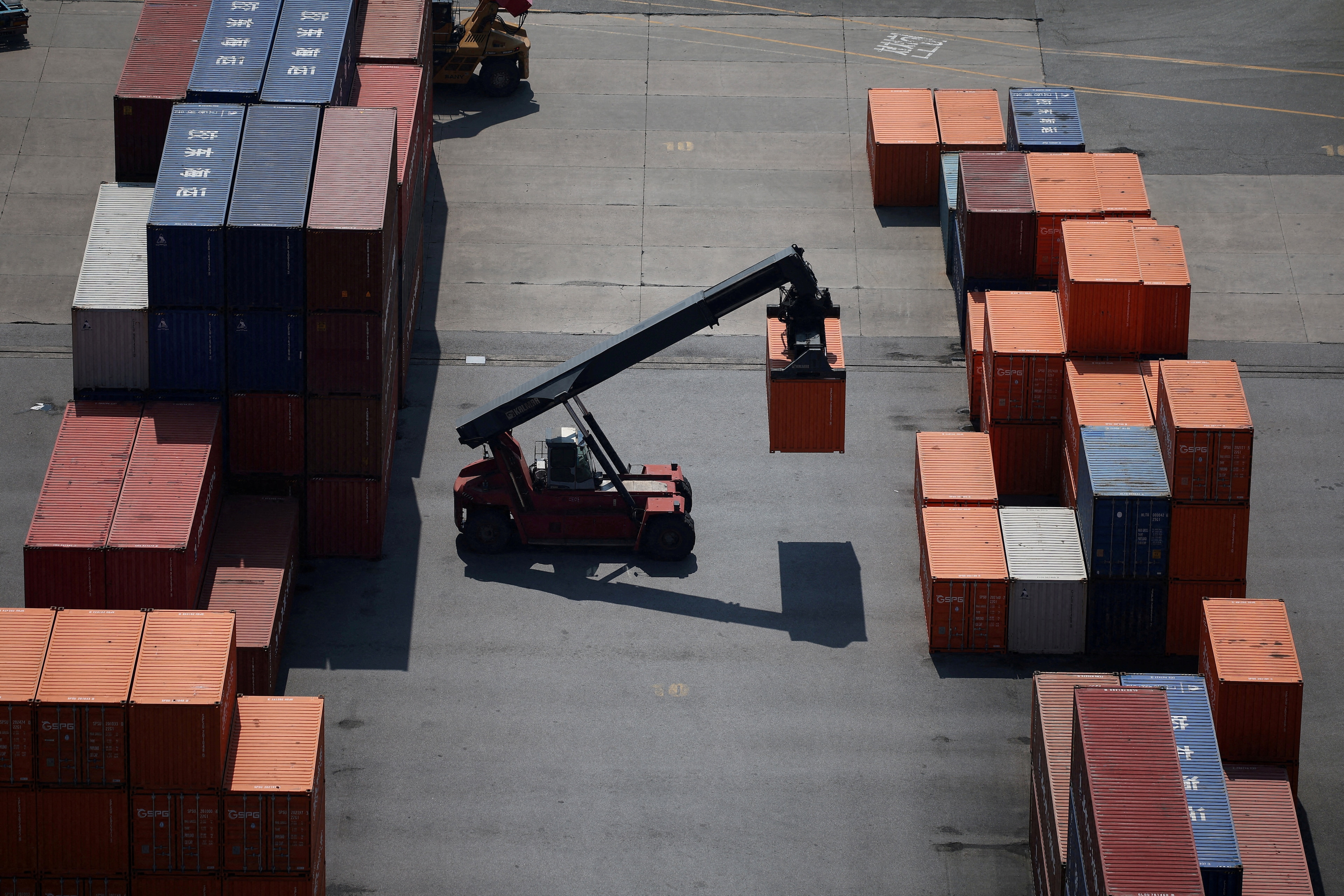How will the TPP affect the auto industry?

Stay up to date:
Mobility Solutions
This article is published in collaboration with Vox EU.
Many prominent economists have weighed in on the recently signed Trans-Pacific Partnership (TPP). While their positions range from hostile to supportive, there seems to be general agreement that, in the words of Paul Krugman (2015), “[t]his is not a trade agreement”. Stiglitz and Hersh (2015) even claim it is a “charade” to argue that the TPP is an agreement about free trade.
We show in this column that for at least one important sector — the auto industry — tariff cuts included in the agreement are of major importance; tariff differences generate big trade differences in the industry and import duties on cars are exceeding 30% in three major TPP markets.
Nevertheless, we concur that TPP contains much more than just tariff reductions. These ‘deeper integration’ policies have major implications for multinational car-makers. This is in line with Baldwin’s (2011) assessment that the ‘basic bargain’ underlying agreements has changed from “exchange of market access” to “foreign factories for domestic reforms”. For example, one of the most compelling arguments heard in Canada for TPP was that without it, Japanese car-makers would stop investing in Ontario plants.
Figuring out how to quantify the impact of deeper integration poses a challenge. In a recent paper (Head and Mayer 2015), we extend recent models of multinational production to incorporate three frictions, one for trade flows (called ‘τ frictions’), and the other two for technology transfer (referred to in the literature as ‘γ frictions’) and marketing (denoted as ‘δ frictions’). The γ friction comprises costs of managing of overseas affiliates, such as the expenses involved in transferring technology, controlling quality, and shipping inputs to faraway plants. The δ frictions involve the costs of maintaining distribution networks abroad and customising cars to suit local regulations. These frictions allow us to pinpoint how deeper integration changes the predicted impact of TPP on producers and consumers. Let us turn first to the traditional τ friction in its most classic form – tariffs.
Figure 1. Large tariffs and the auto industry

Figure 1 shows that a number of countries still impose large tariffs in the auto industry and these tariffs have a substantial impact on trade flows. Each point represents a country-pair gravity residual plotted against the bilateral tariff.1 We use data from 2009 because it is the most recent year with nearly complete tariff data. The negative relationship is quite clear, with a slope indicating a trade cost elasticity around five (very similar to what Head and Mayer (2014) report as the average over many non-auto studies). Several of the country pairs in the figure involve TPP members (identified with blue diamonds), whose trade is impeded by large tariff barriers – Vietnam imposes an average tariff above 40% on its future TPP partners. The corresponding figures are 23% for Mexico, 19% for Malaysia, 9% for Peru and 6% for Chile and Canada. Maximum tariffs are higher than these averages – 30% in Malaysia and 70% in Vietnam, to name the largest. Indonesia, which has indicated interest in joining the TPP in the near future, has maximum tariffs of 40%. Thus, TPP is planned to lower tariffs that are in many cases much higher than those lowered by past trade agreements.
We evaluate the consequences of several prospective changes in regional agreements, changing the three different types of frictions in turn. Each of the frictions is linked to a separate aspect of a triangle – countries of production and consumption, production and consumption, relate to the headquarters and consumption pair. Our data for the automobile industry enables us to identify all three frictions since we see all edges of the triangle. That is, we observe the flows of each car model from all production plants to all destination markets, together with headquarters of the brand that designed that model.
Armed with econometric estimates of how regional trade agreements change each of the frictions, we use the model to simulate new agreements. TPP, by lowering each of the frictions, affects many margins of adjustment, shifting the distribution of where cars are assembled, offered and sold in different parts of the agreement, but also outside of it. For instance, if TPP makes Japanese plants more efficient in Canada, it will contribute to an expansion of Toyotas and Hondas exported from Canada to countries inside and outside of TPP, in part at the expense of the exports of Japanese or EU-made Toyotas and Hondas. This in turn will affect the degree of competition in non-members, generating more reactions by European brands, but also Japanese and US companies operating in Europe. A rich pattern of adjustments follows that can take place through multinational production reallocations when we alter the frictions.
Figure 2 represents graphically the ten most important changes for car production (panel a) and consumer surplus (panel b) predicted by our counterfactual analysis of TPP.
Figure 2.


In both panels, the green bars display the predicted impact of TPP as if it were just a trade agreement – the regional trade agreement dummy variable is turned on between the assembly and destination countries for prospective members of TPP. Our estimations reveal that, on average, the enactment of a regional trade agreement is equivalent to an 8% tariff reduction. As expected, each of the major car-producing members reduces output for its home market. In the case of the US, the reduction amounts to 672,000 cars (Chevrolet and Ford are the main losers, while Toyota’s operations in the US is the third largest loss). Japan’s 89,000 reduction in home market sales is dwarfed by a 1.7 million increase in car sales to the other TPP countries. Overall, Japan expands production by 12.4% while the US industry contracts by 9.3%. One explanation for the big surge in Japanese production is that we estimate it to have a significant cost advantage over the other TPP producers. Another reason is that as of 2013, Japan only had tariff-free access to the Mexican market.
The orange bars add the MP gains to the TPP (a rise of operating efficiency in another member state that we estimate to be around 6%). From the point of view of Japanese workers, deeper integration is unappealing, as it reduces the gains in production by about 500,000 cars (1.1 versus 1.6 million). This occurs because TPP raises efficiency in Japanese plants in the US, Australia, Canada, Mexico, Malaysia, and Vietnam. The response to this ‘γ effect’ is big enough for Canada to convert a net production loss of 163,000 into a production gain of 229,000. The main changes are due to Canadian Toyota and Honda factories, which are predicted to ship nearly 100,000 fewer cars to the US under shallow integration, while they increase their sales to the southern neighbour by more than 80,000 if the ‘γ friction’ also falls. In contrast, the plants located in Mexico face greater erosion of preferences when serving the US and Canada as the TPP experiment applies deeper integration. This is due to the fact that Mexico already has a regional trade agreement in place with Japan since 2005. Therefore, the ‘γ gains’ by Japanese brands operating in Canada or the US are very harmful to Mexican plants of the same brands, which do not experience any gains, and instead suffer from a strengthening of competition in their main markets.
Deepest integration (represented by the blue bars) involves cutting the δ frictions between members, a cost we evaluate at more than 6%. This is the best of the three scenarios for Japanese producers, with export gains to the other TPP members rising to 2.3 million (i.e. more than offsetting the losses from lower γ). Aggregate Japanese production rises by 15% as a consequence of the removal of all three frictions. While TPP looks bad for US auto-workers, panel b of figure 3 shows there are large predicted benefits for US consumers. The US price index for cars falls by 2.6%-5.7% with the largest gains when all three frictions are removed. Canadian consumers gain 6.8% under deepest integration. This is because the reduced cost of distributing Japanese models in Canada leads to greater variety of Japanese models available at lower prices.
All frictions considered, we predict the Trans-Pacific Partnership will bring considerable disruption to the industry, while offering sizeable gains for car buyers.
References
Baldwin, R (2011), “21st century regionalism: Filling the gap between 21st century trade and 20th century trade rules”, CEPR Policy Insight 56.
Head, K and T Mayer (2015), “Brands in Motion: How frictions shape multinational production”, CEPR Discussion Paper 10797.
Head, K and T Mayer (2015), “Gravity Equations: Workhorse, toolkit, cookbook”, in, G Gopinath, E Helpman and K Rogoff (eds), Handbook of International Economics Vol. 4, Elsevier.
Krugman, P (2015), “This is not a trade agreement”, New York Times blog.
Stiglitz, J and A Hersh (2015), “The Trans-Pacific Free-Trade Charade”, Project Syndicate.
Footnote
1 The gravity residual is the log of the ratio of actual car shipments to the shipments predicted by the simplest version of the gravity equation. The gravity prediction is the product of total production in the exporting country and total counts of cars bought by the importer, divided by the distance between them. The x-axis is the log of one plus the applied tariff rate (the formulation implied by micro-founded models of gravity), taking preferential rates into account.
Publication does not imply endorsement of views by the World Economic Forum.
To keep up with the Agenda subscribe to our weekly newsletter.
Author: Keith Head is a Professor in the Strategy and Business Economics division at the Sauder School of Business at the University of British Columbia. Thierry Mayer is a Professor of Economics at Sciences-Po and CEPR Research Fellow.
Image: Newly arrived Korean made KIA Sorento SUVs are seen parked at the port of Manila. REUTERS/Erik de Castro
Don't miss any update on this topic
Create a free account and access your personalized content collection with our latest publications and analyses.
License and Republishing
World Economic Forum articles may be republished in accordance with the Creative Commons Attribution-NonCommercial-NoDerivatives 4.0 International Public License, and in accordance with our Terms of Use.
The views expressed in this article are those of the author alone and not the World Economic Forum.
Forum Stories newsletter
Bringing you weekly curated insights and analysis on the global issues that matter.
More on Trade and InvestmentSee all
Spencer Feingold
August 18, 2025
Nii Simmonds and David Timis
August 18, 2025
Madeleine North
August 6, 2025
JJ Enoch
August 6, 2025
Spencer Feingold
July 30, 2025






